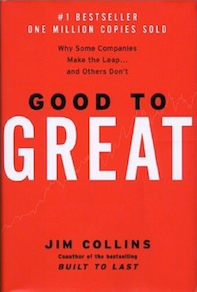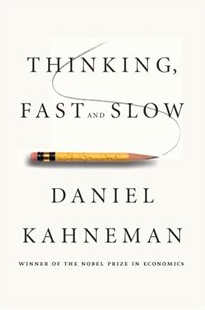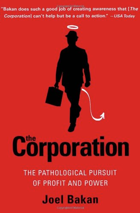Good to Great: Why Some Companies Make the Leap and Others Don't
Good to Great: Why Some Companies Make the Leap and Others Don't

REVIEW
This book starts with a simple statement - “Good is the enemy of great. And that is one of the key reasons why we have so little that becomes great.” In essence what Collins means by this statement is that becoming ‘good’ is too often ‘good enough’. He explores this concept through a systematic study of a handful of publicly traded companies considering the question, “Can a good company become a great company and, if so, how?”
His conclusion from this investigation is a good-to-great framework that identifies three essential categories for a company to become great: disciplined people, disciplined thought, and disciplined action. While all of these principles are fascinating, this book review focuses on one in particular from the disciplined people category: Level 5 Executive Leadership. Collins discovers that leaders of truly great companies are not flashy big personalities but rather those with an ability to “build enduring greatness through a paradoxical blend of personal humility and professional will.” He contrasts this with what he calls Level 4 Effective Leadership. An effective leader is able to inspire commitment to a vision and stimulate higher performance but lacks the Level 5 personal traits. The three levels below these he describes are: Competent Manager, Contributing Team Member, and Highly Capable Individual. As one example of Level 5 leadership, Collins uses Dave Packard (from Hewlett and Packard) as an example of a true Level 5 leader. Despite being one of Silicon Valley’s first billionaires, Packard spent his whole life in the small home he had built in 1957. When he passed away, Packard gave his entire $5.6 billion dollar estate to charity and his euology delivered by his family mentioned his past as a farmer but made no mention of his business success or the company Hewlett Packard.
For further details on this concept of Level 5 Leadership and the other principles of disciplined people, thought, and action, we recommend picking up this book.
Thinking, Fast and Slow
Thinking, Fast and Slow

REVIEW
This Will Make You Smarter: New Scientific Concepts to Improve Your Thinking
This Will Make You Smarter: New Scientific Concepts to Improve Your Thinking

REVIEW
The Corporation: The Pathological Pursuit of Profit and Power
The Corporation: The Pathological Pursuit of Profit and Power

- Author
- Joel Bakan
- PUBLISHER
- Free Press
- DATE
- March 7, 2005
- PAGES
- 240
- LANGUAGE
- English
- ISBN
- 978-0743247467
REVIEW
How to Debate a Creationist
In honor of the 150 anniversary of Charles Darwins's The Origin of Species, and in the face of opposition to modern biology, Skeptic society is pleased to offer one of it's top selling resources as a free PDF download for one week only.
Th 22-page handout edition includes: 25 evolutionist answers to 25 creationist arguments, and 10 answers to Intelligent Design creationist arguments.
Review
This leaflet provides an easy read and a good understanding of some of the arguments creationists use. On the flip side it also provides a good understadning how evolutionists look at things.



